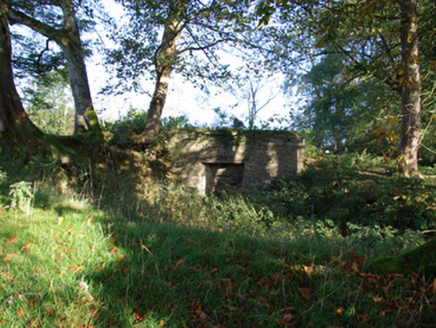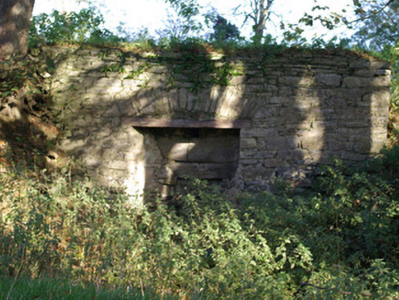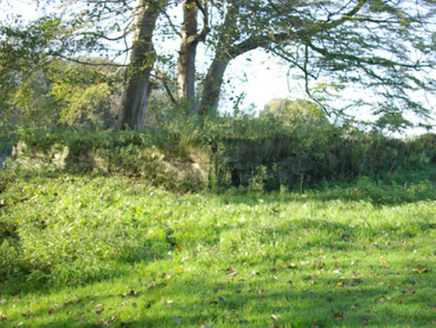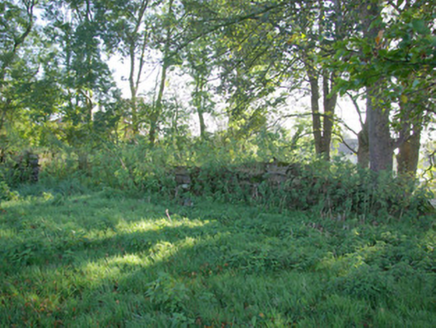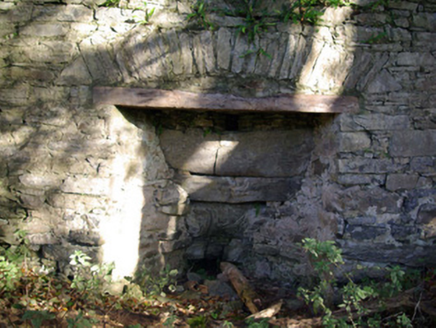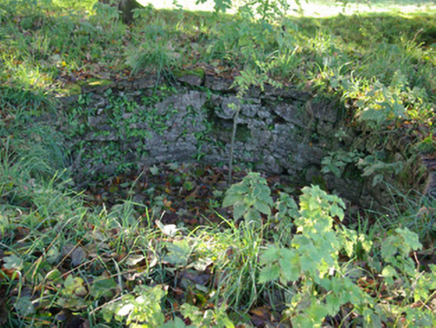Survey Data
Reg No
40832004
Rating
Regional
Categories of Special Interest
Social, Technical
Original Use
Kiln
Date
1800 - 1840
Coordinates
221189, 401349
Date Recorded
16/10/2007
Date Updated
--/--/--
Description
Freestanding single-bay lime kiln on square-plan, erected c. 1820. Now out of use. Constructed of roughly coursed rubble stone masonry. Square-headed opening to front (south), the former oven aperture, having rubble stone voussoirs (segmental-headed) and with modern timber lintel over. Former loading chamber on /circular-plan to the summit having rubble masonry construction to chamber. Built into low rock outcrop. Partial earthen embankment to rear, formerly giving access to loading chamber to summit. Set slightly back from road a short distance to the west of Convoy, and across the road and to the north of the main entrance (see 40832003) to Convoy House. Possible remains of another former lime kiln located in a field a short distance to the west.
Appraisal
This interesting former lime kiln, probably erected during the first half of the nineteenth-century, survives in relatively good condition and retains its early character and form. It is well-built using local rubble stone masonry and is an appealing and unassuming element of the agricultural/industrial and social heritage of County Donegal. The embankment to the rear was built/modified to allow for the easy loading of stone through the circular opening in the roof structure, while the aperture to the front was used to fire the oven to burn the stone and produce lime. Lime kilns appear to have come into popular use in Ireland during the eighteenth century and were a very common feature in the rural landscape up until the first decades of the twentieth century. They were used to burn limestone to produce lime, which was used as an agricultural fertilizer and spread on agricultural land, or in construction as a mortar and a render. Lime was also used for lime-washing buildings, particularly farm buildings, as it was regarded as a cleansing agent at the time. This small-scale kiln was probably in use by a local farmer and probably provided lime to small farmers etc. in the immediate environs. However, its location adjacent to the main entrance gateway (see 40832003) serving Convoy House suggests that it may have had some connection with this estate. Small rural lime kilns started to go out of common usage during the late nineteenth-century with the advent of industrial-scale lime production facilities and improvements in the transport network, particularly the development of the railways. This simple feature is an interesting feature in the western approaches to Convoy, and is an integral element of the built heritage of the local area.
